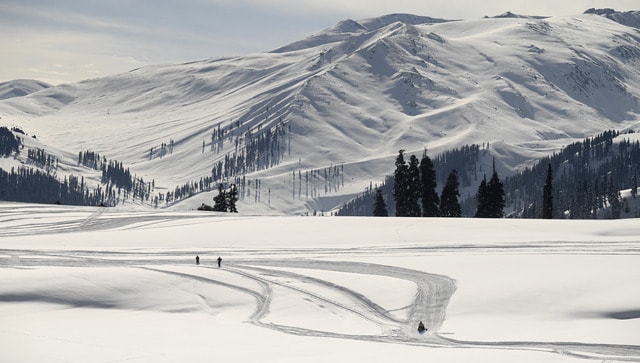The scenic Gulmarg is dry as the tourist-favourite town of Kashmir has witnessed hardly any snow. Popular as Kashmir’s winter wonderland, Gulmarg is bereft of its usual blanket of snow that covers its hillsides at this time of the year.
The lack of snow has upset tourists and ski enthusiasts from India and abroad who visit the town located at an altitude of 8,694 feet to enjoy skiing. Usually snow-clad Himalayan peaks are bare. Srinagar, the winter capital of Jammu and Kashmir, has so far not received snowfall this year. Even tourist resorts like Pahalgam in south Kashmir and Sonamarg in central Kashmir are affected.
Why is this happening? Let’s understand.
What’s going on?
Kashmir is reeling from a dry spell, with the valley reporting a 79 per cent drop in rainfall and scant snow in December 2023. This has raised concerns among ecologists and those relying on tourism for their livelihood.
Gulmarg, a famous tourist spot, is flocked by skiers who take training sessions in January. However, its meadows are vacant this year.
Tauseef Rathore, training in-charge at the Indian Institute of Skiing and Mountaineering (IISM), Gulmarg, told The Hindu, “There are no ski training sessions in the main bowl this year so far. We are using slopes of Bota Pathri (about seven kilometres from the main bowl) for training as snow has not completely melted there in the shade of the tree line”.
Stakeholders are worried that if the dry spell continues, it would affect tourism with people cancelling their bookings. Speaking to Hindustan Times (HT), Javaid ur Rehman, assistant director of tourism in Gulmarg, said: “There is no snow anywhere in Gulmarg bowl. The slopes of the meadow appear barren. The situation is the same across the Valley. The resorts in Europe are facing the same fate.”
“Although tourism is not yet affected, it is definitely going to have an impact in the coming days. There will be cancellations if the dry spell persists,” he added.
The dry snowscapes have also prompted a discussion on social media with people attributing it to climate change.
What’s behind the dry spell?
Experts say the dry spell in Kashmir is likely due to the climatic phenomenon, El Nino. “The whole of December and the first week of January has been dry,” Mukhtar Ahmad, Director of the Kashmir Meteorological Centre, told ANI.
“There was a pattern of early snowfall for the last three to four years which is missing this year. There is no major spell. El Nino has persisted since November and may continue till next month,” he explained.
El Nino, meaning Little Boy in Spanish, is a natural climate pattern borne out of unusually warm waters in the eastern Pacific. The weather phenomenon affects global weather patterns and is predicted to raise temperatures in 2024. Ahmad told The Hindu that it is often observed that there is a deficit in precipitation during the El Nino years.
“This is not the first time that we have experienced a dry spell. We saw it in 2022 and December-January of 2018, January of 2015 and December of 2014,” MeT’s Srinagar centre director was quoted as saying by HT.
The absence of western disturbances, which are responsible for rainfall in the plains and snow in higher regions, has led to a shortage of snowfall so far, NDTV reported citing the India Meteorological Department (IMD).
According to Ahmad, there is no relief in sight for the time being, with hardly any precipitation on the cards. The weather is expected to remain dry till noon on 16 January.
The effects of El Nino are already visible in Kashmir, which is seeing prolonged dry spells and a lack of snowfall, as per an India Today report. The changing weather pattern has hit local agriculture as an extended dry spell has taken a toll on the crops of saffron farmers in Kashmir, the report added.
If the situation persists, the Khelo India Winter Games that are to be held from 2 February could be impacted. The competition, which will take place at Kongdoori and the main bowl of Gulmarg, is set to feature 400 athletes representing various states, Union Territories, and the Indian Army.
With inputs from agencies
Link to article –
Disappearing Act: Why Kashmir’s Gulmarg is snowless this winter





